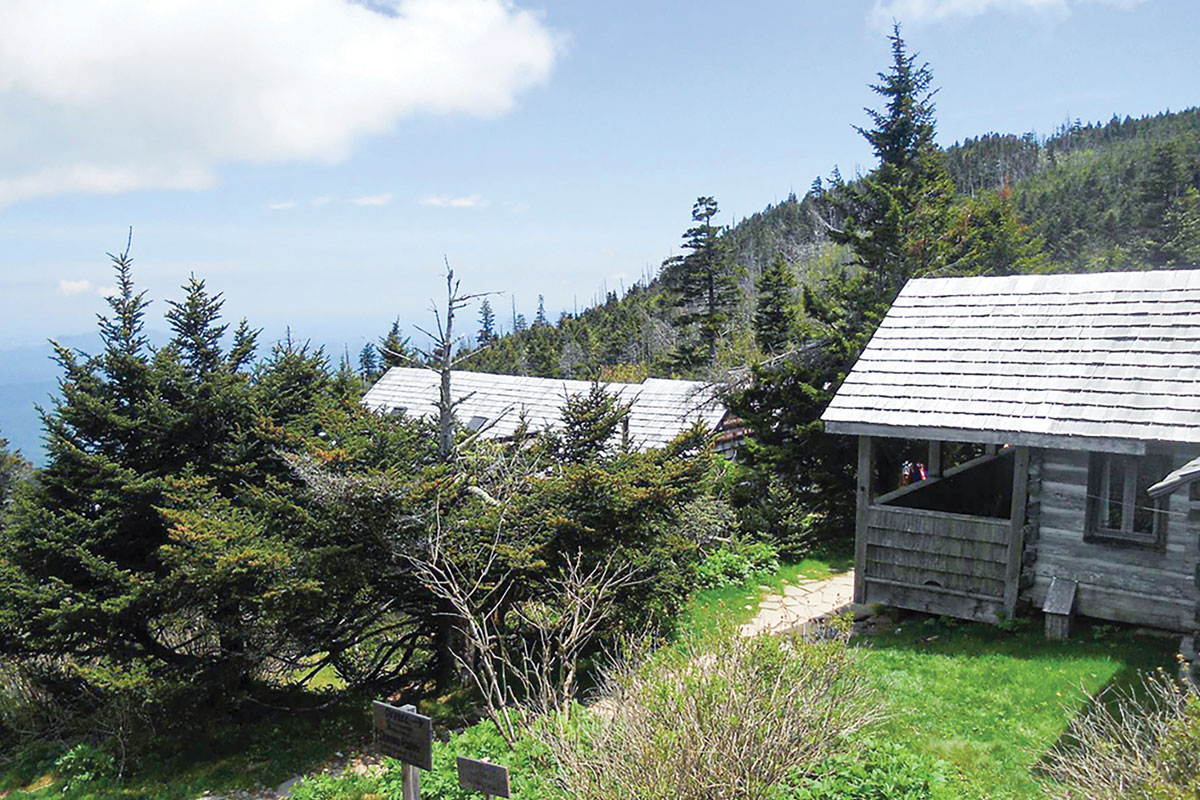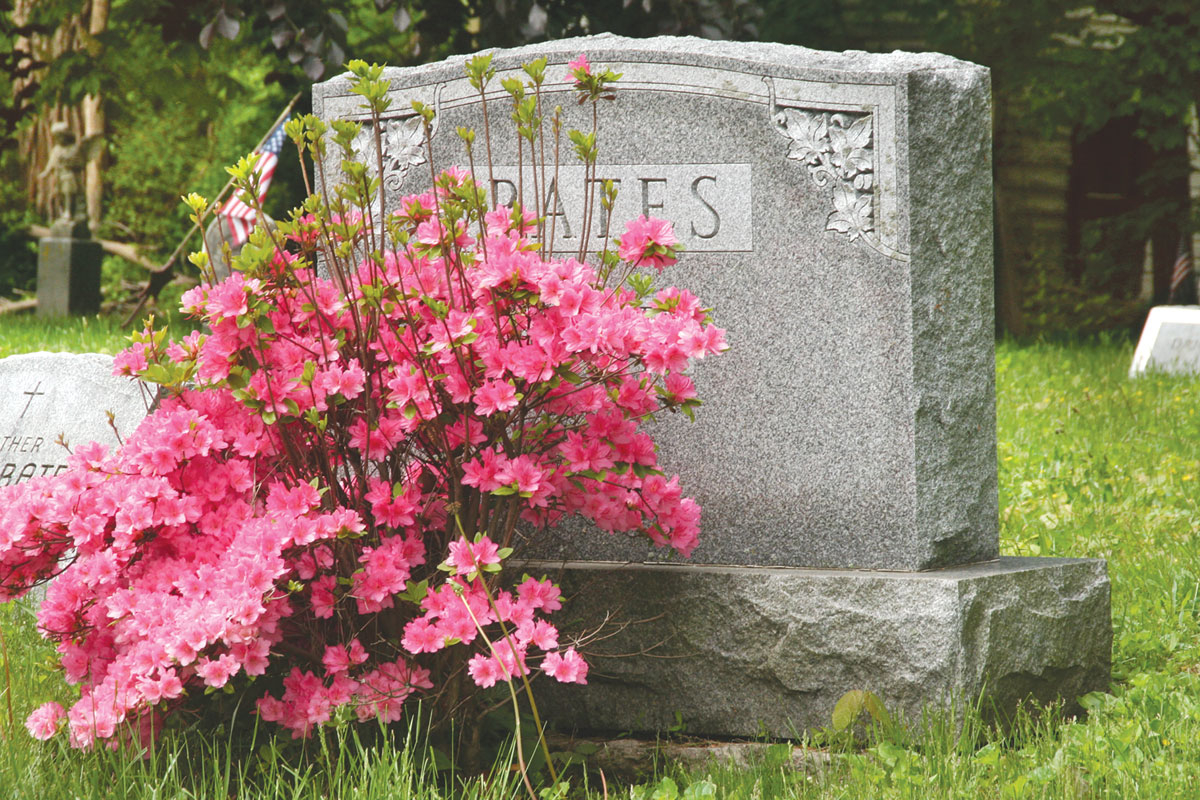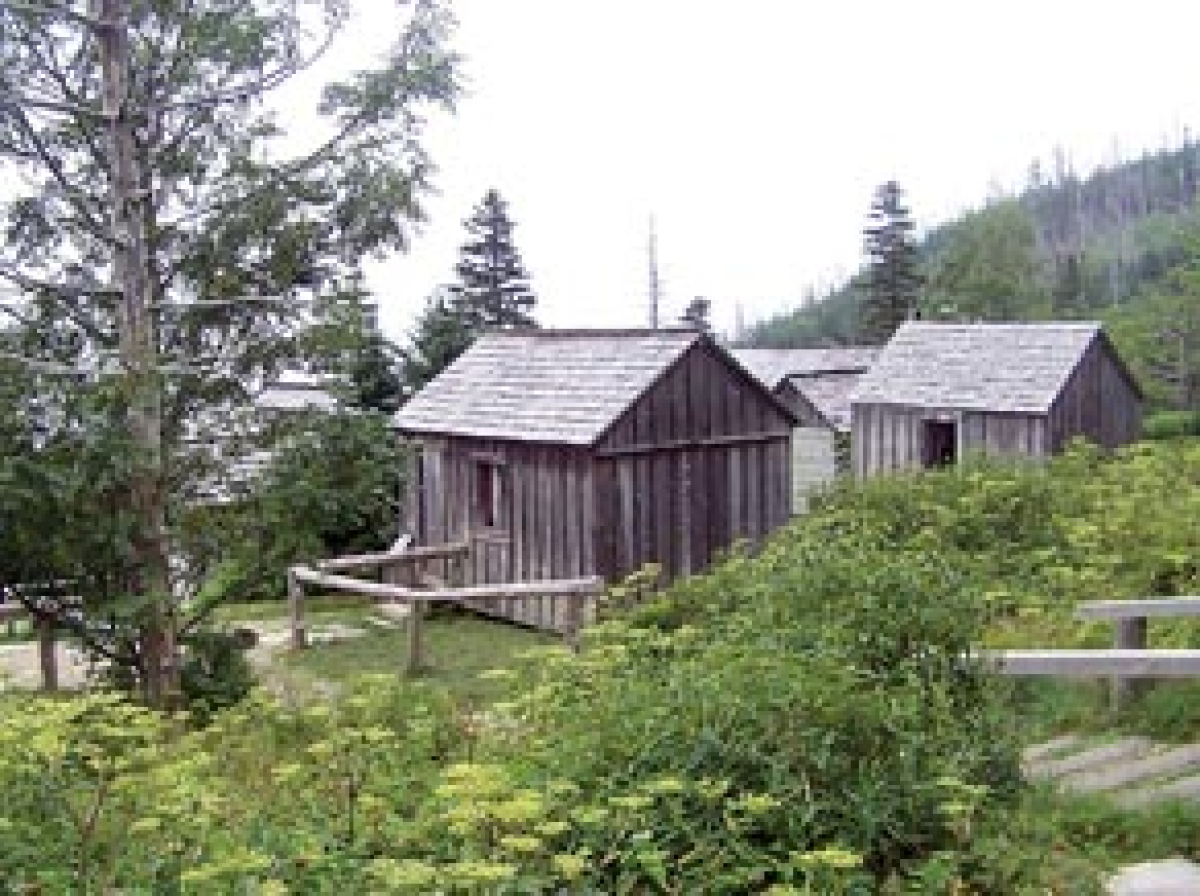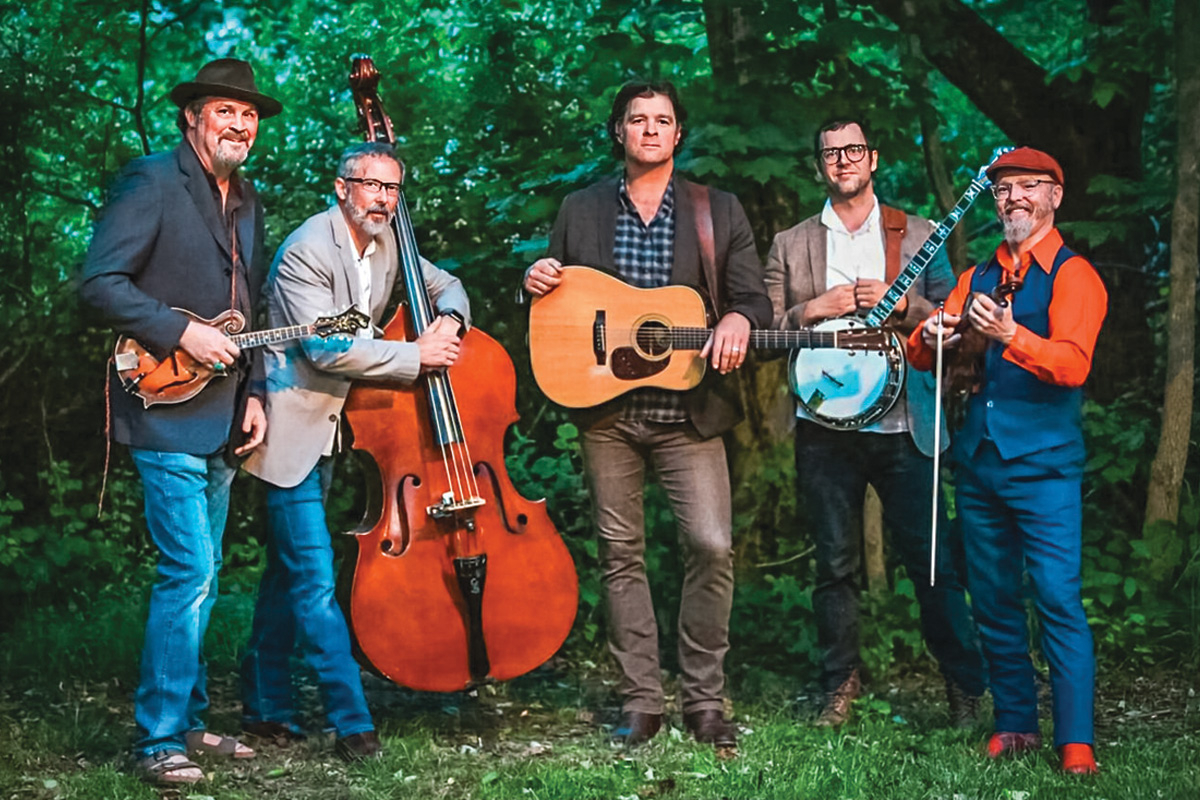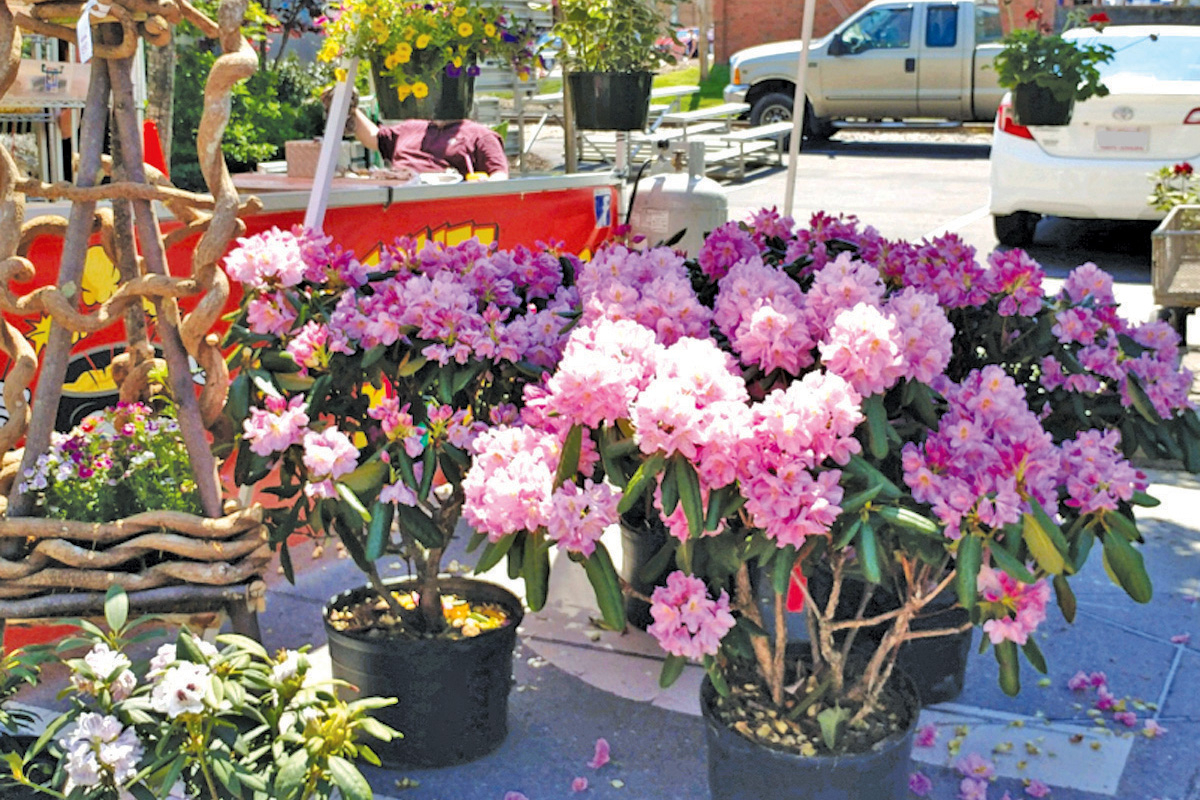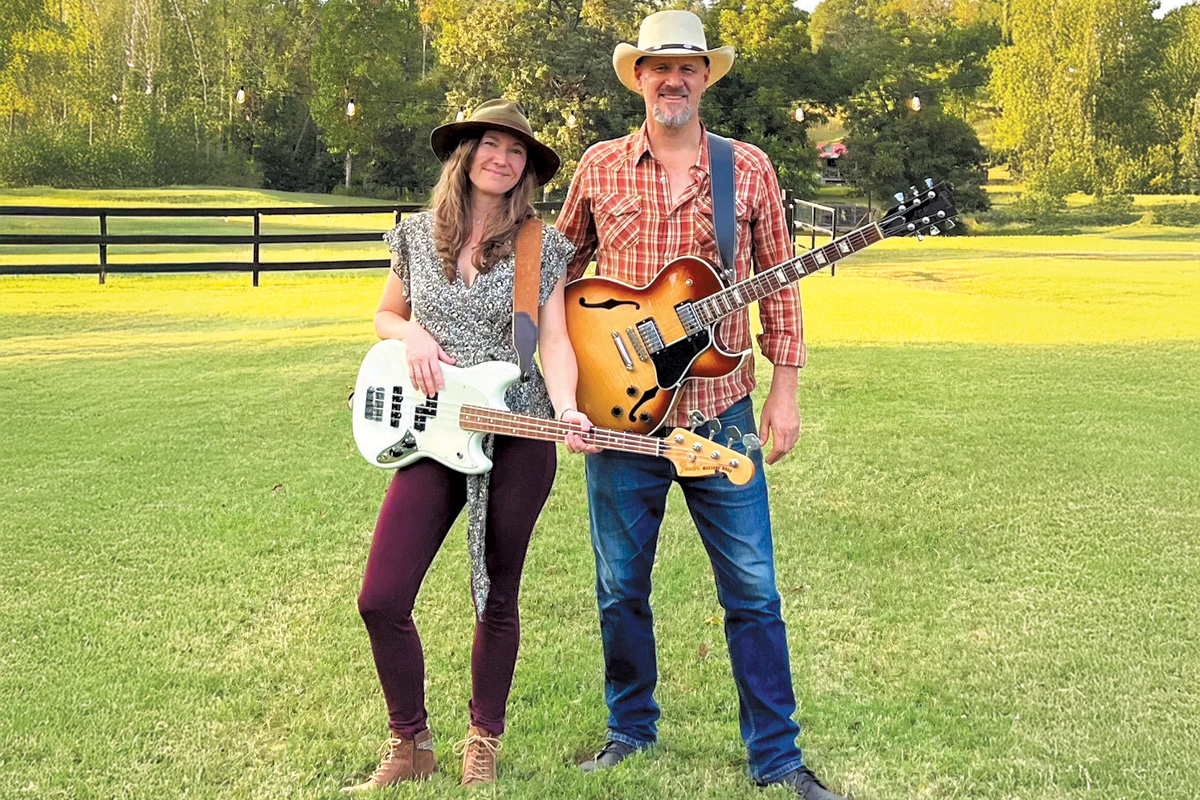Waynesville guards water supply despite pressure to unleash the spigot
The Town of Waynesville is negotiating with its biggest water customer, trying to take a stronger role in the future of how — and to whom — it sells water.
The Junaluska Sanitary District, which provides water to some of Haywood County’s biggest customers, like Haywood Community College and Haywood Regional Medical Center, is in talks to sign a contract with the town for how much, and how little, water they’ll buy from the town over the next 10 years.
For Waynesville, these are pretty essential talks. Junaluska Sanitary District already serves a sizeable chunk of the county. Should they decide to expand that business — which isn’t out of the question — it could catapult Waynesville into the spot of de facto regional water supplier, not a role the town board is necessarily amenable to.
Equally, without a contract, the town could be spurned by its biggest customer, which would dent revenues and stick them with the bill for system upgrades they’ve done for JSD.
The original impetus for the contract was a $500,000 grant up for grabs from the N.C. Rural Center. JSD was poised to scoop up the money to expand or improve their water system, but they ran into a hitch: the Rural Center wanted a signed contract, guaranteeing that the flow of water from Waynesville would continue.
There had been a contract once before, signed in 1994 and expiring in 1999, but since then, the two groups had been operating essentially on a good-faith basis.
But with the need for a contract imminent, Waynesville then seemed to realize that it was in their best interest to formalize the relationship, too.
Currently, Junaluska Sanitary is an at-will customer. The town could shut off their taps anytime. Likewise Junaluska Sanitary could decide to buy water from Canton or Maggie Valley.
As the town’s largest water customer, losing their business would make the town’s investment in infrastructure to serve Junaluska for naught.
“If they decide to walk away from us, we’ve put all this infrastructure in,” said Waynesville Mayor Gavin Brown.
Perhaps a larger concern, however, is that Junaluska Sanitary may decide to get into the business of regional water transport, courting larger municipal customers like Clyde and boosting their demand from Waynesville dramatically.
Brown said the debate is a philosophical one.
“We don’t really want to tell them who and where they can sell to, but to dome degree we do. Yes, we sell water outside the city limits. And we want to sell it, but we want to know where it goes,” Brown said.
And that’s been the sticking point in negotiations with the JSD, who originally came to the table with a minimum daily purchase of 50,000 gallons, which is a pittance compared to the 400,000-plus they currently average each day. On the other end, they pitched a maximum daily amount of 1,250,000 gallons, an astronomical number that the town could technically accommodate, but would have to do some major upgrading to guarantee pressure and steady good service to everyone on the lines. It’s nearly a third of all the water Waynesville currently supplies to all of its customers.
“The concern we have is do they have aspirations to expand the system elsewhere?” said Town Manager Lee Galloway, who was slightly worried by the high- and low-ball figures thrown out by the JSD board in the initial contract draft.
In essence the town is concerned about being made a regional water supplier without their knowledge or consent, and with very little recourse if that happens.
In theory, Waynesville could terminate JSD as a customer if the latter began demanding more water than the town wanted, or was able, to give. But with vital public entities like the hospital, HCC and Tuscola High School all hooked into, and dependent on, water flowing through JSD’s lines, Waynesville would be hard-pressed to make such a drastic move.
Meanwhile, if the JSD were to ever see a better deal for water elsewhere, the town would be left holding the bag on all the infrastructure upgrades it’s made to accommodate them.
For their part, the JSD has said it doesn’t have any hidden agendas up its sleeve, and that the numbers in the original contract were just that — simply numbers. Their role, they say, is to provide water to people in the county who ask them for it, and they need this contract if they want to make the improvements necessary for that to happen.
“There are a few producers of water in the county, and there are plenty of people in the county that need water, so we have a statutory obligation to provide it,” said Burton Smith, the attorney for the district who is handling the contract. “In terms of how rapidly we grow, if we grow, those are decisions in part made by the [JSD] board and in part made by people who come to them and ask for water. We do not actively discourage or encourage anybody to do anything.”
But towns that provide water aren’t obligated to sell it to people outside their town limits. The choice to extend lines and expand water service beyond their borders is their own.
Since development often follows water lines, Waynesville doesn’t want to unwittingly contribute to sprawl by funneling more and more water to JSD for expansion, Brown said.
Waynesville has said that they’re happy for the JSD to grow, but within reason and with a little notice. They did concede to drop some contract wording that would’ve forced the JSD to come to them when they were considering new customers, but they also got the district to come down on their maximum limit to 750,000 gallons a day, which Galloway said will still require some system upgrades, but nowhere near what they’d need for 1,250,000.
In the end, said Mayor Brown, the discussions aren’t adversarial, but he sees the town as a public service concerned mainly with keeping the public good in view, while JSD, he said, is taking a business approach that sometimes clashes with the town’s view.
The contract is still with the town for review, and both sides said they expect to reach a workable solution soon.
Tuscola hosts 39th annual Country/Western Show
By DeeAnna Haney • SMN Intern
Donning their best flannel and cowboy boots and armed with harmonies and dance moves, Tuscola High School’s Summit is ready to serve up another toe-tapping, knee-slapping Country/Western Show.
Aptly titled, “Country Through and Through,” the 39th annual production will be slightly different from years past. The performers are ditching the typical emcee style introductions and turning the auditorium into a Grand Ole Opry theme with a contemporary twist.
Before each number, a Summit member will explain the song’s history and what happened the year of its original release. Although the show features current country hits as well as classics, all the students agreed they enjoyed learning the older songs that they might not have been exposed to otherwise.
Some choir members, like senior Makayla White, even discovered connections with family members through many of the songs.
“Some of the songs we’re singing my mom said she used to sing in elementary school, like the songs in our medleys, ‘Old Joe Clark’ and ‘Cripple Creek’ and ‘Happy Trails,’” White said.
Included in the medley of songs, Summit will perform tunes such as “The Old Chisolm Trail,” “Mule Train,” “Riders in the Sky” and “Buffalo Gals.”
Aside from the group numbers, each choir member has chosen their own solos to perform, a process that allows the students to individually showcase their talents and tell a story through song.
Watching the students choose their solos and add their own personal touch to the show is one of Tuscola Choral Director Fritzie Wise’s favorite aspects of the concert, she said.
Just as varied as the group songs, the solo performances range from upbeat to ballads, some songs from as early as the 1930s.
White plans to sing a LeAnn Rimes cover version of John Anderson’s “Swingin,” an energetic, youthful song about swinging on a front porch with a new love.
Senior Heather Hoyle, who joined Summit this year, will perform an original song dedicated to a very close family member who has watched her grow up and helped her through difficult times in her life.
The senior members chose Lady Antebellum’s “Stars Tonight” as their senior song. For the older choir members, this marks the most meaningful song in the show.
“We really want to go out with a bang,” White said excitedly. “This is our last year to leave our mark, so we want to do it right.”
But the students know the perfect show doesn’t come without sacrifice. During the weeks leading up to opening night, Summit can be found rehearsing dance steps and voice parts from as early as 7 a.m. to as late as 11 p.m. on weekends.
“I don’t think a lot of people know exactly what goes into what we do,” said senior Samantha Gibson. “People look at us and say ‘Oh, they do country/western, they dress up redneck for a week and sing country songs,’ but they don’t realize the effort that we have to put into it.”
From the long hours and hard work always comes a successful sell-out show, with sometimes more than 600 audience members in one night.
For Wise, the main goal of the country/western show is to provide Haywood County with an escape from day-to-day problems and showcase young people in a positive role.
“Country Through and Through” runs from Thursday, March 10 through Sunday, March 13. Tickets are $8. If interested in purchasing tickets, contact the Tuscola Choral Department at 828.456.2408.
Ingles continues growth trend
Ingles got a green light last week from Waynesville’s town board to bulk out their Russ Avenue location, complete with gas station and convenience store, adding another expansion to the chain’s growing empire of new and revamped stores.
The store will jump to nearly 120,000 square feet, taking over the adjacent storefronts vacated by Goody’s and others, and will feature a host of new offerings, including an expanded café and wine section.
While Ingles spokesmen won’t comment on their corporate strategy, the expansion is part of a campaign to enlarge their locations across the Southeast and build new ones.
The chain just came out with plans for a new megastore on Smoky Park Highway in Asheville. What will eventually be the largest of the chain’s 203 stores has, this week, been announced in Hull, Ga., just outside Athens.
While other businesses continue to struggle, Ingles has posted healthy profits for the last several quarters. This follows two years of declining profits from 2008-2009.
From October to December 2010, the company christened one new store and opened two remodeled locations. At the same time, it reported a nearly 4 percent increase in sales, up $1.7 million over the same quarter the previous year. On tap for the remainder of 2011 are five new or remodeled store openings, plus six new gas stations, with a new wing being tacked onto its Asheville distribution center in 2012.
“We’re off to a strong start for fiscal year 2011,” said CEO Robert Ingle in a statement last month. “Overall conditions are improving, but we continue to be cautious about the next few quarters.”
Such healthy sales numbers aren’t a new phenomenon for the store. At the close of 2010, it celebrated its 46th consecutive year of sales growth. The company has managed to stay profitable, even in a continually slumping economy, which could be due in part to a dearth of comparable competition.
While Ingles has now swooped in to dominate the western counties, many of the store’s historic rivals such as Harris Teeter and Winn Dixie have been slowly pulling out of the area.
ALSO: Residents weigh in on new Ingles
The former has been concentrating its efforts and dollars on urban landscapes like Greensboro, Charlotte and their attendant suburbs, while the latter emerged from Chapter 11 bankruptcy in 2006 and dragged it’s operations southwards, shunning locales north of Birmingham.
Even so, Ingles announced last month that it would be pulling the reins on its ambitious course of growth and expansion.
Beyond already-planned projects, finance officials have reported that they’re going to scale down the growth agenda they pushed in 2008 and 2009.
“The Company is being more cautious in its development plans until economic conditions improve,” said an uncharacteristic statement on its business forecasting released with first-quarter financial statements in January.
So while Canton and Cashiers — and soon Waynesville — are reveling in their new digs, the same good fortunes may not be coming to the region’s other stores any time soon.
As for the Russ Avenue build-out, Chief Financial Officer Ron Freeman said hopes are to get the project off the ground relatively quickly.
“Given the weather this time of year, it’s difficult to say when we’ll get started, which will have a lot to do with when we expect to finish,” said Freeman. “It’s too early to tell.”
The remodeled version will sit on a footprint of nearly 120,000 square feet and construction will be phased to allow the store to remain open. The portion of the shopping center once occupied by Goody’s will be razed first, followed by the northern half of the building, where the store is now located.
The average size of an Ingles store rose 10 percent over the past five years and was 53,524 square feet as of late September, according to a company regulatory filing. Waynesville will be two and a half times the average store size.
Plan passed by town board
The supermarket chain came before the board with its application for a conditional use zone, which would allow them to sidestep some of the town’s current regulations.The biggest variance the store sought was for their parking lot. Current rules require parking lots to be behind new or renovated buildings, a near-impossibility on Ingles’ lot.
One of the key new features of the site plan – and a major sticking point for every board and commission the plan has come before – is a redesigned parking lot. The company’s new plan includes a plethora of trees to spruce up what is currently a treeless asphalt slab. Medians and other traffic-calming devices will also bring an element of organization to the lot which, in its present state, is a free-for-all governed only vaguely by painted guides.
Planning Director Paul Benson said that the application isn’t too far outside the city’s current ordinances, or even a far cry from what the proposed new ordinances are shaping up to be.
“I think they’re doing a pretty good effort there,” said Benson. “For a renovation of an existing site, it sure goes a long way toward meeting the ordinance.”
Ingles CFO Ron Freeman said they were happy with the process, which took just under three months to get through the town’s system.
“We are pleased with the Board of Aldermen’s decision,” said Freeman. “We are looking forward to bringing a better shopping experience to our customers in Waynesville.”
Residents weigh in on new Ingles
When Ingles pushes out of its old shell, it’s new home will bring new options to customers, like a stir-fry station, improved produce section and expanded wine and café offerings.
For many local residents, however, the store’s current incarnation is already an asset to their regular shopping routines, and any improvements would just be icing on the grocery-buying cake.
Debbie Simpson, a part-time Haywood County resident, said the store surpasses what the Publix in her part-time Florida home has to offer.
“Basically, I like the store the way it is,” said Simpson, adding that if she had to pick an area that could be stepped up, “maybe more international food” would be the way to go.
James Rich concurred with Simpson’s assessment. The Waynesville rock mason said he couldn’t find a complaint or even a suggestion to proffer for the store. Rich was put on babysitting duty, pushing a grinning, stroller-bound baby around the produce section while his wife added to an already-full cart, a usual family ritual, he said.
“You can’t make it much better than they already have,” Rich said.
Constance Ebert and her husband Millard, speaking from frozen foods where they were eyeing a bag of canary yellow banana pops, said they were pretty pleased with the Waynesville store, but Constance was able to enumerate a few suggestions for improvements.
“I think demonstrations that show how you can prepare things would be great,” Ebert said, and though she said she was pleased with the store’s cleanliness, she’d love some more healthy options, a more Fresh Market feel.
For her part, Waynesville native Dianne Pass gave the supermarket a glowing review as well, and she was pretty excited to hear some of the improvements coming the store’s way, especially the landscaping plans.
“I love this store, I can’t imagine it any other way,” said Pass a twice-a-week patron of the store, “but it’s such a beautiful area, the trees would be great.”
Town aldermen were on board with that, too, lauding the choice to add some flora to the storefront. There was some dispute about tree type, but in the end, the board was pleased by the corporation’s efforts.
“I really appreciate the fact that Ingles has been willing to make this much of an investment in shade trees and landscaping in this parking lot,” said Alderman Elizabeth Feichter.
The changing face of Haywood County: in the middle of everything
For Darcy and Kevin Sisson, living in Waynesville makes perfect sense.
She works in manufacturing in Asheville, his employer is Swain County’s Nantahala Outdoor Center. Waynesville offers the couple a central location, a town large enough to have an active civic and social life of its own, and quality schools for their kids. Throw in lower tax rates than one finds in Buncombe County, and you have the ideal locale for such a family.
The couple and their three children represent a growing segment of the population in Haywood County, according to Mayor Gavin Brown and Mark Clasby, Haywood County’s economic development director. Haywood County is, more and more, becoming a bedroom community.
Last month, Brown and Clasby pinpointed the change during a meeting of the county’s Economic Development Commission. And in doing so, additionally pitched the idea that “bedroom community” should no longer carry the stigma the words once did.
Commute becomes part of day
“To be honest with you, it’s worked out better than I thought,” said Darcy Sisson, noting that she’s started using the commute time to make calls for work or catch up with friends. “They always know between five and six, I’m usually in the car,” she said.
Sisson emphasized that she and her husband might work elsewhere, but Waynesville is home. And for them, that doesn’t just mean the place where you lay your head at night.
“We try to be involved in the community,” Sisson said. “We have our friends there, we belong to the Haywood Fitness Center and things like that, we do a lot of stuff downtown. That’s really where our life is.”
According to statistics compiled by the Employment Security Commission, three quarters of Haywood County residents commute outside the county to work. This doesn’t exactly classify the whole of Haywood County as a textbook bedroom community, but with three quarters of residents working elsewhere, it does make the county into at least a partial bedroom community. If true, this means Haywood County faces different challenges than the county has faced before.
Brown sees it less in terms of sheer statistics, and more as a social descriptor of the community’s changing face.
“It’s not a number so much as a description of what your community is,” said Brown. “It’s just more a reflection of the way our economy has changed in the world and in the United States in general. Some people would see it as bad, I know. And they do. And there’s logic to that.”
But he sees this as an opportunity to engage people who have, for whatever reason, chosen to live in Haywood County, even though their work is elsewhere. Doesn’t that make them prime candidates for a larger degree of community involvement and devotion, the fact that they’ve chosen to call the county home?
Where the action happens
Haywood County is centrally located, right in the heart of big employers in Cherokee, Sylva and Asheville. So if people choose to live here, the challenge lies in getting them to engage in the community, have a stake that will keep them there, even if their out-of-county job changes.
“It’s the stability factor that’s important to me,” Brown said. “The last thing you want is some generic community that people are moving in and out of all the time.”
The key, he said, is to provide services and quality-of-life options that entice people to come and stay because they love the community, not because they work in it.
So things such as local art groups, quality health care facilities and better options for fitness, dining and civic life are all an important part of getting commuters to put down roots.
“If we provide those kinds of things, then people choose to not make their job the primary thing in their life,” Brown said.
Gateway Club turns up the heat at Fire & Ice Star Chef competition
Culinary talent throughout Western North Carolina gathered to compete in a single-elimination culinary skills recipe and preparation contest during the Fire & Ice Winterfest this past weekend.
Sweet potatoes, pork tenderloin and Chayote squash were among the ingredients given to contestants in the Haywood County Chamber of Commerce’s Star Chef competition.
Area Chefs & restaurants submitted recipes using the star ingredient of sweet potatoes prior to the competition. Recipes were then reviewed by a panel of professional chefs and food critics, and the top four were invited to the Waynesville Inn to prepare and present their culinary masterpiece.
The top two finalists, the Gateway Club & Maggie Valley Club, were selected by a judging panel to compete in a 45-minute star chef cookoff. Each finalist was given a mystery box of ingredients to prepare their best interpretation of the “Stars of the NC Farms”.
The Gateway Club won the “Top Chef Award” for their braised pork tenderloin with Chayote squash and couscous.
Something to hold on to: Master furniture maker inspired by handmade revolution
John Gernandt loves the word tactile. It’s not so much the word, really, as the whole concept. People, he says, love to pet things. It is in our nature. We are, by default, a touchy species.
He is saying this as he sits on a low wooden stool, running his fingers along the pock-marked texture carved into the sides. See, he says, it’s tactile, human.
Gernandt is a master carpenter, a third-generation furniture maker, and the piece he’s sitting on is one of his own, on display in his downtown Waynesville gallery, Textures on Main.
His creations are dotted around the gallery, and though they’re all different, most are easy to pick out as being crafted by his hand. The workmanship is excellent and has built him a reputation in the world of custom furniture-making. His portfolio includes works done for millionaire clients, as well as some done for locals. He’s not an elitist in that sense, as evidenced by his belief that furniture – even art – should be touchable.
He’s a strong proponent of the handmade revolution, and speaks with passion about populating modern life with objects made by actual craftsmen. He counters what he sees as the myth that handmade or custom is necessarily more expensive.
“My furniture doesn’t cost a dime more than if you go to a nice furniture store, and it can’t, because that’s my market,” says Gernandt.
There is, he says, something to be said for having and using things that someone has poured time and thought and talent into.
“When you sit down at a table where there’s handmade dishes and glasses and chairs, it’s a good feeling,” he says. “And it’s heirloom furniture.”
And that’s what he’s in the business of building: heirloom furniture.
He has a workshop in the basement of his Main Street gallery where he uses only domestic woods to craft his works, 80 percent of which are commissions.
There are curving templates of every shape and size hanging on the walls of the workroom, which he proudly says are all what he calls human curves. They are all modeled after curves one might find on actual humans, none are made by protractors or compasses. “I think they’re just stale,” he says of such mechanical curves. And that’s part of what Gernandt says is appealing about his work. It’s human, tactile.
As an example, he points to a particular table back upstairs in the gallery. Its legs have a slight outward slant which, he says, came from the person who commissioned the piece. He had her lean forward as her husband traced the curve of her lean, and that is the curve of the table. There are examples of that everywhere, he says.
In terms of strict classifiers, his style is contemporary, and that is what he markets himself as. But he doesn’t see contemporary as a strict genre to which he must conform. He is adamant that contemporary is the culmination of all traditions that have come before, and he takes great pleasure in studying them then incorporating them into what he does today.
“I enjoy studying furniture history,” says Gernandt, pointing out a King Louis ankle wrap on a cabinet standing against the wall. That’s part of the fun, incorporating elements of history into new creations.
Gernandt’s own personal furniture-making history started early, age 9 to be precise. His grandfather was a furniture maker, and he loved working with the older man. As a young boy, he approached him with the notion that he, too, would like to make furniture for a living. His grandfather considered and pointed the young Gernandt to an unsanded chair.
“’There’s a chair down there, sand that,’” he said. “‘It’ll take you eight hours a day for five or six days.’” And when he completed the job, his grandfather awarded his stamp of approval, conceding that maybe his grandson had what it took to make it a career.
He did do a stint away from the craft for a while, getting a degree in education before returning to furniture artistry for good in his twenties.
Then he and his wife Suzanne, a textile artist, moved to Western North Carolina with their children because, he says, it’s at the heart of craftsman culture in America.
And business has been good for them, though, of course, not perfect.
He is hopeful that there will always be a market for quality crafted pieces like his, pieces that have a story and a history.
He’s very excited about the idea of apprenticeships to keep the craft alive, and hopes that what he’s able to pass on to future furniture makers is the idea that what makes them important and unique is their creativity.
He’s aware that, in terms of cost, he can’t compete with flat-pack factory furniture, but there is something more valuable, he says, about creativity and craft.
“I think people are starting to understand the importance of creativity in their life,” says Gernandt. “You feel better about your life, and there’s value in that. There’s real value in that.”
To see more of the work of John and Suzanne Gernandt, visit www.texturesonmain.com.
A place where two worlds collide head-on
By Scott Muirhead • Guest Columnist
Frog Level is what remains of the golden age of the railroads, the age when bulk goods, travelers and mail were carried exclusively by train, when neither interstate highways nor 18-wheelers existed. Some might believe that age a better time, more romantic, more soulful, and I don’t know about that.
But it is impossible not to believe that 80 or 90 years ago there was something magical about a lone train whistle calling to a small town deep in the mountains. The train might have come from Winston-Salem, or even Raleigh itself, and it might have been headed anywhere! The train always stirred excitement with its arrival onto the Depot Street crossing. Its presence was reassuring; and if not exactly sacred, it was something, something larger than life.
I don’t suppose any train ever did depart that was not loaded with the expectations of the hopeful, and with the regrets and longing of a whole lot of the rest left standing in its ephemeral cover of smoke and steam. Trains took people away, even those who stayed behind. And nothing then was ever so quiet as the town when the train had departed.
Trains must have been revered. Their roaring and chugging and squealing and rumbling was big, sure enough, but the trains represented something even bigger, really big, bigger than the town, bigger even than the mountains themselves. Was it progress? Was it industry? Was it power? Maybe, probably it was. But there was more. With an ear-piercing whistle blast announcing the approach into town, and then with the click-clacking of caboose wheels as they eclipsed time and space and disappeared, the great steel leviathans spoke to us, telling us unerringly that beyond the horizon there was something more.
Then center stage, Depot Street now is forlorn. The glamour of travel, of new shipments for the department store, of the unceasing energy of commerce, most of that has gone away. The brick buildings remain, but they seem sad for the most part, as if aware they are just mere remnants of another time, faded from this world. Today the freight trains that roll into town are infrequent, and they possess no mystery, just sand for the concrete plant, and lumber for the lumber yard. Trains are incongruous in a high-tech world, mere plodding nuisances to drivers in a hurry.
Frog Level is where two worlds collide, one the lunatic fringe of wastrels, the other a loose set of ambiguous rules, variously interpreted. Above Frog Level is the contemporary commerce of Main Street with all its many shops and subsidiaries, places like the county courthouse and the ubiquitous insurance agencies. Then, two blocks below Main Street is the realm of the wrong side of the tracks, where the complexities of life are less well examined. There you will find the town waver. Anytime, most any day, he’ll be somewhere between the bridge and the car wash, ambling and lurching and punching the air with his open palm at each passing car and truck.
What day is of no more importance to him than the time of that day. All that matters are the cars and trucks passing through Frog Level, his part of town, his Waynesville. It’s where the soup kitchen feeds the winos and the junkies and the ne’r-do-wells; where the chemical company mixes and brews its industrial potions; where the old has been outpaced and outmaneuvered by the new. It is that urban stretch people drive through to get to somewhere, because for them Frog Level is nowhere.
But it is a real place of real events, where can be seen, for instance, the dashed hopes and dreams of speculators emblazoned on the store fronts of stores that never opened. For a couple of years about a decade ago Frog Level had been Waynesville’s real estate bonanza of the post-Vietnam era. Deals were struck, properties were traded and sold, leases were drawn and signed and initialed. The Smoky Mountain Railroad was coming to town, bringing tourists and their money, and the prosperity of would-be merchants was just around the bend.
Then the railroad didn’t come, and now the storefronts are boarded up or blacked out, and all those hopes and dreams have moved on down the line.
Only the soup kitchen and a coffee shop seem to prosper in the microcosm that is Frog Level. The electric motor shop and the cabinet maker and the used appliance emporium are still around, but they have been there through 30 years or more, unaffected by boom or bust. Meanwhile the bridge over Richland Creek, just down from the cabinet shop, serves as the rooftop of a communal campground where the winos take shelter from the weather and the world. They’ve got themselves a regular cardboard condo complex down there; and nowadays they even share a cell phone. Such is the domain of the smiling waver.
It’s doubtful the man knows where he is, surely who or why he is; or whether he knows society has pegged him the crazy guy who waves at everybody. And perhaps that is why he always smiles. He smiles because of all the things he does not know. And maybe he smiles at the irony residing in the fact that so much of what he doesn’t know doesn’t matter anyhow. It implores us to ponder the question: Why do we smile who know so much? The waver sure looks happy, not to know so much.
I would bet that most people feel sorry for the waver, thinking him deprived. I don’t. When I cross over the tracks and pass him by, him standing there smiling with his open palm high in the air, I am usually enroute to a place I am compelled to go. Him, he doesn’t have to go anywhere; but I do, and I am headed to the courthouse to pay another tax on my little bundle of burdens; or to one of the insurance agencies to pay a premium to protect the little bundle; or to one of the banks to deposit the imaginary wealth of a paycheck that seems ever too small.
It’s just one of the drawbacks to prosperity, but riding with me usually are my two boon companions, Worry and Stress. I never see them hanging out with the waver, but they are well known to most all of us of the dubious fortune to be enlightened and aware and playing by all the rules.
Henry Thoreau said, long ago, that he pitied the peasant trudging beneath the weight of all his worldly possessions bundled on his back; but Thoreau did not pity the man because he had so little to his name. He pitied him because he had so much to carry.
The Frog Level waver has no bundle on his back, and he smiles and he smiles. Maybe he smiles and waves to encourage us, us who perhaps he pities.
(Scott Muirhead is a builder who lives in Maggie Valley.)
HART studio season begins with ‘Life in the Theatre’
The Haywood Arts Regional Theatre will open its 2011 winter Studio Theater Season with a bit of backstage humor and some twists for the audience when “A Life in the Theatre” debuts on Jan. 7.
The comedy by David Mamet will feature HART Executive Director Steve Lloyd and Asheville actor Casey Morris in the play’s two roles under the direction of Julie Kinter. Mamet, one of modern theatre’s most celebrated playwrights, is known for his salty language which is toned down in this play, but audiences should be aware that the show still contains some adult language.
“A Life” follows two actors, a seasoned veteran and a new rising star in a resident company as they prepare and perform in a number of scenes Mamet has created to poke gentle fun at some of theatre’s sacred cows. There is a Chekov scene, showcasing the tedious Russian dramatic style, a lifeboat scene, an operating room scene, a Civil War scene, and a French Revolution scene that is obviously taking a jab at “Les Miserables.” On stage and off things break down and the two actors grow together then apart. For “A Life in the Theatre” audiences should expect some surprises. The first when they enter the performance space.
The HART Studio Season features six plays in just 12 weeks and is one of the highlights of the winter arts scene. Productions regularly sell out and runs are often extended. The Feichter Studio is HART’s second performance space, seating only 60 people and reservations are recommended to insure patrons get a seat.
Make a reservation by calling the HART Box Office and leaving a message. Calls are not returned unless no tickets are available. The show will run Friday and Saturday, Jan. 7-8, at 7:30 p.m. and Sunday, Jan. 9, at 3 p.m. Tickets are $8 for all adults and $5 for students, general admission. To make reservations call the HART Box Office at 828.456.6322. All performances are in the Feichter Studio Theatre, 250 Pigeon Street, Waynesville.
Waynesville Inn to play host to second-annual Winterfest
Haywood County residents looking to brave the ice and leave their firesides this January can find an afternoon of respite from the winter in Waynesville’s second annual Winterfest.
The festival, themed Fire and Ice, is hosted by the Haywood County Chamber of Commerce and will be held at the Waynesville Inn and Country Club on Jan. 15 from 3-7 p.m. The event will feature an ice carving competition, a fashion show, a dog sledding race to benefit local animal charity Sarge’s, and an Iron Chef-esque cooking competition featuring chefs from around the region.
The idea is to make the county, and Waynesville in particular, a year-round destination, not just a summer and fall spot. Currently, there’s not much besides a bit of local skiing to draw visitors in the coldest months, but the chamber’s executive director CeCe Hipps wants Winterfest to be one of the first steps in changing that.
“The main reason that we were doing the Winterfest is to bring people into this area in the winter time to make it a four-seasons destination,” said Hipps. “Our hopes would be that in 20 years from now, it would be the size of the Apple Harvest Festival.”
With that ambitious goal in mind, Hipps and her crew have made a few changes to the festival this year, the most notable being a cut in ticket prices. Pre-purchased adult tickets will be just $10, while they go up to $12.50 at the door.
That buys admission to the festival but doesn’t pay for anything inside like food, drinks and souvenirs. It will pay for watching things like the ice carving competition, one of last year’s festival highlights and a sight to behold as skilled chainsaw artists go head-to-head carving up blocks of ice into glistening sculptures. The artists, Hipps said, come from around the region, including Asheville artist Jeff Pennypacker.
Another new draw at this year’s event will be Star Chef competition, which will feature eight as yet unnamed Western North Carolina chefs who will compete for a spot in the final two-chef competition. Competitors will be picked in the days leading up to the event based on their submission of a recipe that included two cups of mashed potatoes.
A fashion show and dog-sled race, open to all dog owners and their furry companions to benefit Sarge’s, and a fashion show will round out the afternoon.
Hipps said she realizes that coming out on a chilly winter afternoon isn’t exactly what a lot of people have in mind, but she hopes that residents and visitors alike will bundle up and come out for the fun.
“The biggest thing is I just want people to give it a chance, give it an opportunity. It’s in the afternoon so it doesn’t mess with your evening activities,” she said.
While the festival will be more an afternoon of activities than a full-blown, vendor-filled festival like autumn’s apple event, Hipps said that’s what they’re aiming for in the future. There will be one candle maker there, and the ice carving itself is a spectacle to see. All told, it takes the artists two hours to coax their creations from the ice, and it’s an entertaining process. But, she said, in future they hope to add more events and attractions to fill out the day.
“This is the start of it, but we anticipate that it will grow, not only from population but from activities and events that go on as well,” said Hipps. “We have some ideas for future expansions, and Waynesville Inn is great location.”
For more information call the Haywood County Chamber of Commerce at 828.456.3021 or visit www.Haywood-NC.com.






